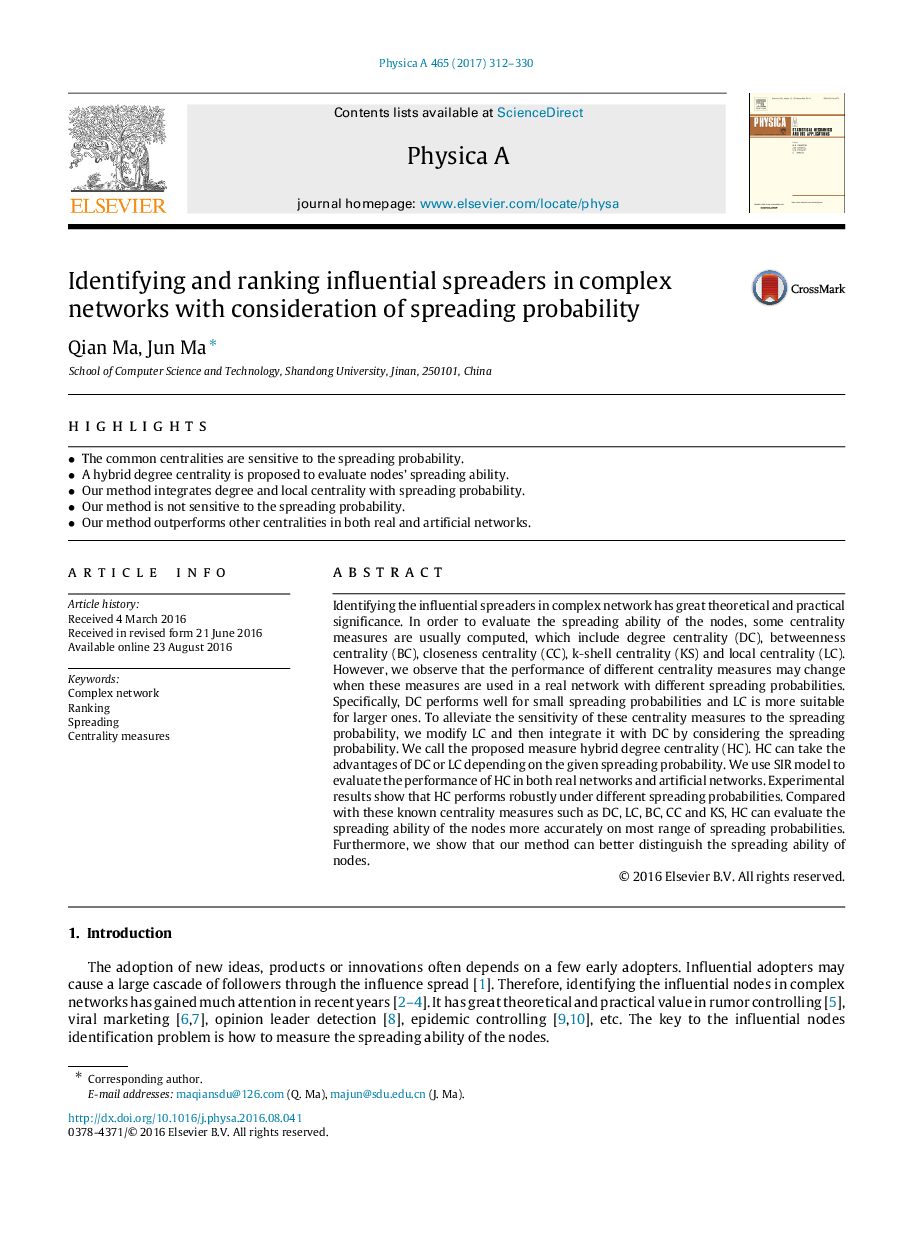| Article ID | Journal | Published Year | Pages | File Type |
|---|---|---|---|---|
| 7376830 | Physica A: Statistical Mechanics and its Applications | 2017 | 19 Pages |
Abstract
Identifying the influential spreaders in complex network has great theoretical and practical significance. In order to evaluate the spreading ability of the nodes, some centrality measures are usually computed, which include degree centrality (DC), betweenness centrality (BC), closeness centrality (CC), k-shell centrality (KS) and local centrality (LC). However, we observe that the performance of different centrality measures may change when these measures are used in a real network with different spreading probabilities. Specifically, DC performs well for small spreading probabilities and LC is more suitable for larger ones. To alleviate the sensitivity of these centrality measures to the spreading probability, we modify LC and then integrate it with DC by considering the spreading probability. We call the proposed measure hybrid degree centrality (HC). HC can take the advantages of DC or LC depending on the given spreading probability. We use SIR model to evaluate the performance of HC in both real networks and artificial networks. Experimental results show that HC performs robustly under different spreading probabilities. Compared with these known centrality measures such as DC, LC, BC, CC and KS, HC can evaluate the spreading ability of the nodes more accurately on most range of spreading probabilities. Furthermore, we show that our method can better distinguish the spreading ability of nodes.
Related Topics
Physical Sciences and Engineering
Mathematics
Mathematical Physics
Authors
Qian Ma, Jun Ma,
